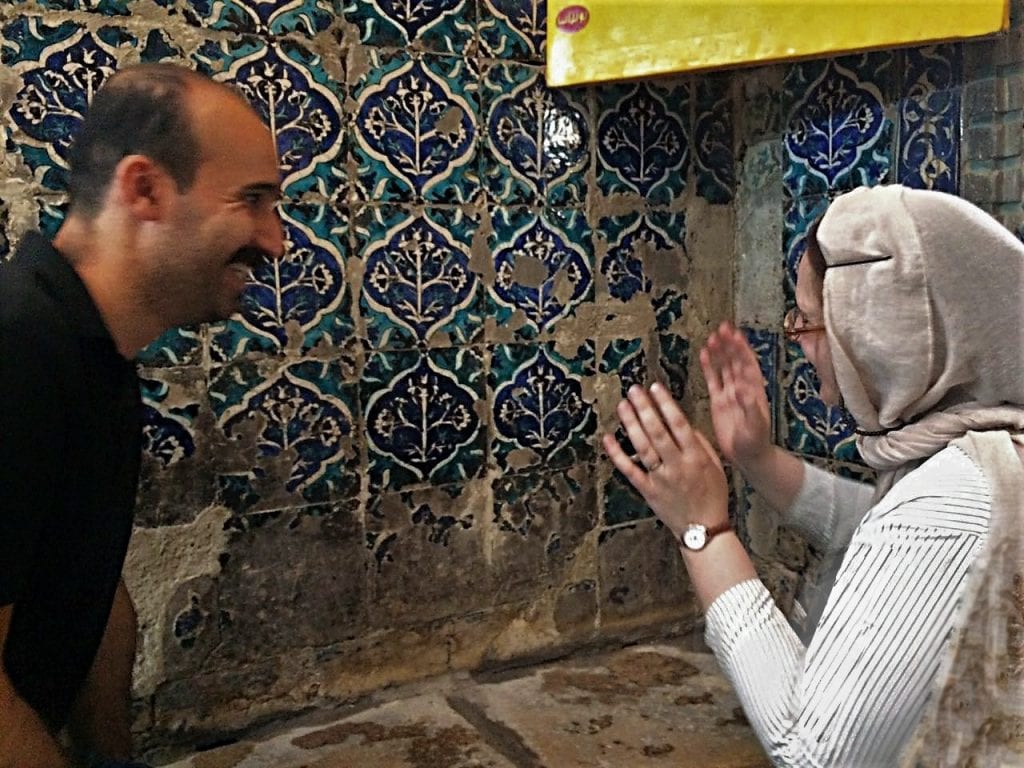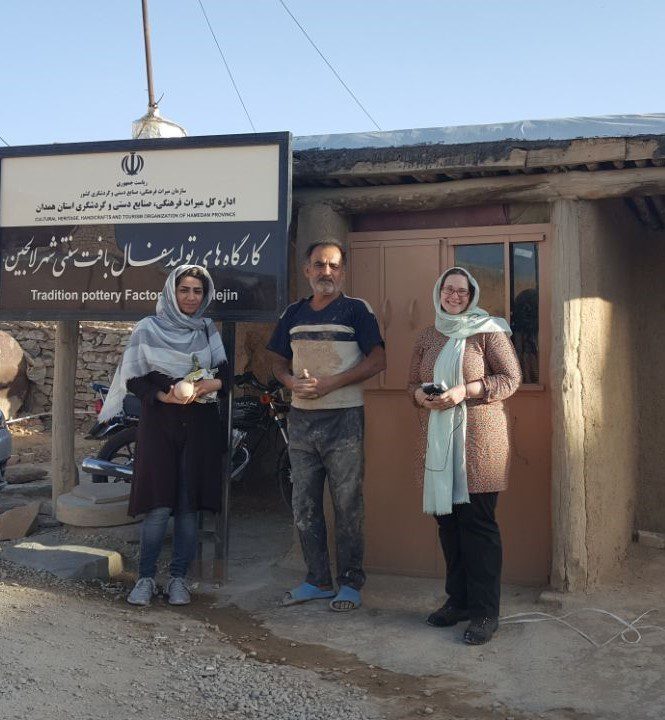October 2017 | BIPS Travel Grant
My primary motivation in undertaking this trip was to conduct in-person research for the completion of my PhD and subsequent publications and exhibitions. This topic is challenging both in its scope and in the relative scarcity of existing sources even within Iran, which necessitates personal observation, participation, and first-hand documentation. My research focus was in establishing a chronological history for the topic. This is key because no such information exists in an organised, published manner, particularly in English. I made progress towards this goal by identifying and interviewing key artists and researchers, then cross-referencing this with biennial and exhibition catalogues and other sources obtained in the country. Through close analysis of the work itself and in conversation with students, professors, collectors, gallery owners, and the general public, I identified several key themes that run through contemporary Iranian ceramic art. While Iranian ceramicists participate in many of the conversations occurring in the global context, responses to issues such as the relationship between traditional potters and more contemporary artists, the role of digital technologies, institutional support and involvement in ceramics, and changing educational and gender roles make Iranian practice unique.
Before my trip, I had the opportunity to meet with one of the curators at the Victoria & Albert Museum in London. She intends to put together an exhibition on contemporary ceramics from the Middle East, and it is my hope that the information I have gathered on this trip, particularly in identifying important artists and works, will contribute meaningfully to this exhibition. I also spoke with Mohammad Mehdi Anoushfar, one of the key figures in establishing a studio pottery movement in Iran, about gathering material for an exhibition at the Leach Pottery looking at the dialogue between British and Iranian potters. In addition, I have been able to use my time here to prepare several articles for publication, including two in collaboration with Iranian colleagues.
My trip has changed in a number of important ways since it was first planned. Although my research goals remained the same, the time frame was shifted substantially. After an initial delay in the processing and approval of my visa, while in the country I was able to arrange for an extended stay after the original duration of my trip as a visiting scholar at the Islamic Art University in Tabriz. This has not significantly affected the major costs of my trip but has allowed me to form lasting relationships with fellow ceramic researchers. A significant challenge was the introduction of a new and largely unknown regulation that required the registration of all foreign cell phones (in addition to the existing requirement for registration of SIM cards). This took almost three weeks to sort out, largely because it was unclear exactly what the process to register the phone was. During this time, my ability to travel and communicate were limited. I also encountered difficulties in the renewal of my visa, due both to the uniqueness of my situation and larger geopolitical events. I rearranged my plans to be able to take advantage of this to spend time at the Qabchy studio in Tabriz as well as other local workshops. Eventually I was able to see almost all of the places I had planned as well as many new ones.
During my trip I have worked hard to make the most of my time, particularly in building personal connections to artists, museums, and other cultural institutions that will facilitate the continuation of this work upon my return to the UK. I have been developing a record of artists and their work, which I hope to eventually transfer to a website devoted the topic, iranceramicarts.org. This will allow me to confirm and extend previous research, while establishing a platform for future scholarly investigations. I am very grateful for the support of the British Institute of Persian Studies, and I believe this project will be a catalyst for further artistic and informational exchange in the ceramic arts.
Right: At the studio of Novin Aslan Islami in the pottery town of Laleji

